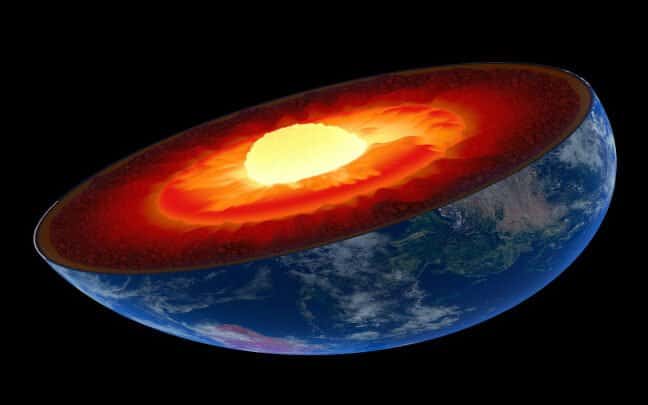How long will it take for the Earth’s core to “run out of fuel”? Experts suggest that the temperature of the Earth’s core is even higher than the temperature of the Sun’s surface, reaching up to 10,000°C.
Located beneath the Earth’s crust, there exists an extremely hot region with soaring temperatures – the Earth’s core. According to a particular hypothesis, our solar system originated approximately 4.5 billion years ago from a cluster of frigid dust particles. This gas and dust cloud encountered some form of disruption, causing it to collapse under the influence of gravity and form an enormous spinning disc.
Earth’s Core Temperature
The accepted estimation for the temperature of the Earth’s core at its surface is believed to be around 6230±500 K (5960±500°C). The density at the core’s center is approximately 12.5 t/m3, and the pressure can go up to 3.7 million atm (375 GPa).
When will the Earth’s core exhaust its energy resources?
The Sun originated from the center of the disk, while the particles in the outer rings transformed into massive fireballs consisting of gas and molten liquid that eventually cooled down and condensed into a solid state.
How much time will it take for the Earth’s core to deplete its energy reserves? Scientists are of the opinion that the temperature at the Earth’s core is higher than the temperature on the surface of the Sun – 10,000°C.
Simultaneously, the surface of the recently formed planet was constantly bombarded by large celestial bodies colliding with it, generating immense heat within and causing the cosmic dust present there to melt.
During its formation, the Earth was a uniform sphere of incandescent rock. As a result of radioactive decay and the residual heat from the planet’s creation, this sphere became even hotter. Finally, after approximately 500 million years, the Earth’s temperature reached the melting point of iron, which is around 1538°C.
This allowed for the acceleration of Earth’s molten rocky material. Elements such as silicates, water, and even air that were relatively buoyant remained close to the planet’s surface and eventually formed the early mantle and crust. On the other hand, heavier metals like iron, nickel, and others were drawn towards the center of the Earth, giving rise to the early core. This process is known as planetary differentiation.
In contrast to the mineral-rich mantle and crust, the core is predominantly made up of metal, specifically iron and nickel. It is widely believed that the inner core is a solid sphere with a radius of approximately 1220 km, boasting a scorching surface temperature of 5430°C. Conversely, the outer core is likely a liquid layer roughly 2400 km thick, with temperatures ranging from 2730°C to 7730°C.
Extremely hot
The red-hot temperature of the core is attributed to various factors, including the breakdown of radioactive elements, the lingering heat from the formation of the planet, and the release of heat during the solidification of the outer core in close proximity to the inner core.

The Earth’s core temperature is sustained by two sources of “fuel”: the residual energy from the formation of the planet and the nuclear energy resulting from natural radioactive decay.
The birth of the Earth coincided with a time of abundant energy in the solar system. During its early stages, the planet experienced constant bombardment from meteorites, generating significant frictional force.
Even though the initial temperature has mostly dissipated, there is another type of temperature that continues to warm the mantle and crust of the Earth.
Naturally, there are abundant amounts of radioactive materials deep underground, some of which are located near the Earth’s crust. When these radioactive materials naturally decay, they release heat.
Scientists are aware that there is a flow of heat from the Earth’s interior to space, which is approximately 44×10 12 watts (TW). However, they are uncertain about the proportion of this heat that comes from the initial temperature.
The reality is that if the Earth’s heat is primarily from the initial temperature, it will cool down much faster. On the other hand, if the heat is mainly generated by radioactive decay, then the Earth’s heat will likely endure for a much longer time.
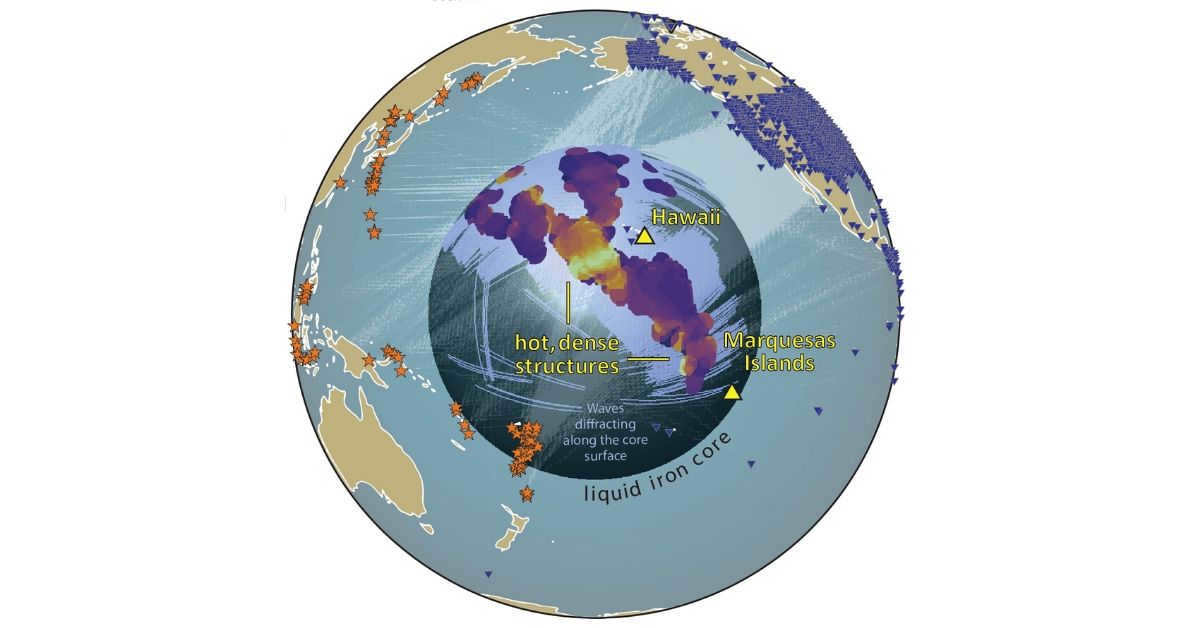
According to some calculations, it may take tens of billions of years for the Earth’s core to cool down, or even as long as 91 billion years. This is a considerable amount of time, and interestingly, the Sun is expected to exhaust its fuel and die out well before the core does, which is estimated to happen in approximately 5 billion years.
Geo-neutrino particles: The Significance of Earth’s Core Temperature
The temperature of Earth’s core plays a crucial role in maintaining the stability of our planet. Additionally, it is responsible for the existence of Earth’s magnetic field, which serves as a protective shield.
This magnetic field is generated by the movement of the outer core, which consists of molten metal. It extends into space, forming massive magnetic fields that act as a barrier. This barrier prevents highly energetic electrons from reaching Earth and forms what is known as the “Van Allen radiation belts.” These belts are essential for sustaining life on Earth’s surface, as they shield us from the solar wind and its harmful effects, such as stripping our atmosphere of the ozone layer.
A collection of electrically charged particles redirects and captures the solar wind, preventing it from stripping away the Earth’s atmosphere. Without this mechanism, our planet would be devoid of life. It is hypothesized that Mars also had a Van Allen belt at one point, which shielded it from the Sun’s harmful solar wind. However, as the planet’s core cooled, it lost this protective layer.
To determine the remaining amount of nuclear fuel on Earth, scientists are utilizing sensors to detect the smallest subatomic particles known to humankind – geoneutrinos. Geoneutrinos are particles produced as byproducts of nuclear reactions in stars, supernovae, black holes, and man-made nuclear reactors.
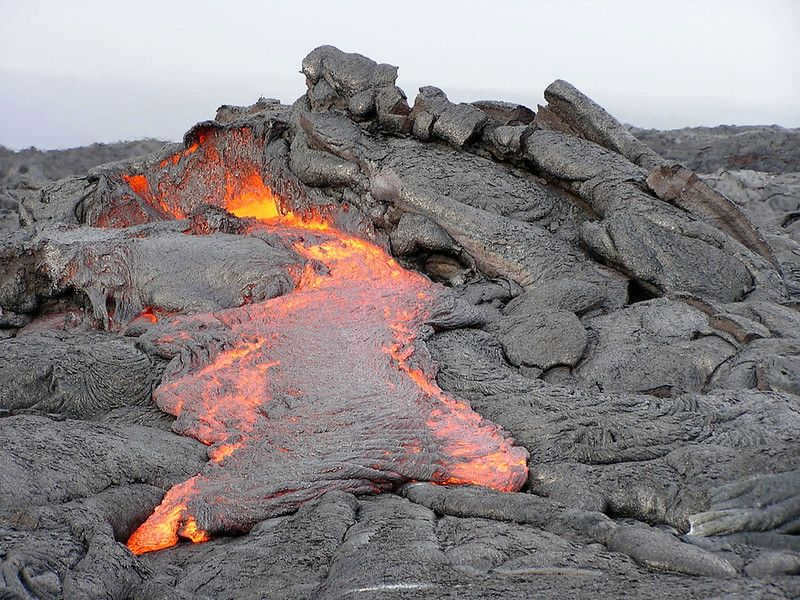
Detecting antineutrino particles poses a significant challenge that requires the use of massive detectors buried deep in the Earth’s crust. These detectors, which are as large as a small office building, are located over 0.6 kilometers below the surface. While the depth might seem excessive, it is necessary to shield the detectors from cosmic rays, which can lead to false positive readings.
During operation, the detectors are able to identify antineutrino particles by observing the two bright flashes that occur when they collide with hydrogen atoms within the device. By keeping track of the number of these collisions, scientists can determine the quantity of uranium and thorium atoms that are still present within our planet.
Regrettably, the KamLAND detectors in Japan and Borexino detectors in Italy only register roughly 16 occurrences annually, resulting in a highly sluggish process. Nonetheless, with the anticipated arrival of three new detectors in 2021 – namely, the SNO+ detector in Canada and the Jinping and JUNO detectors in China – researchers anticipate an annual registration of over 500 occurrences.
The Jinping detector in China surpasses the size of all previous detectors by more than fourfold. Despite its already substantial size, the JUNO detector will exceed the size of all existing detectors by 20 times.
After gathering data on antineutrinos for a span of three years using all five detectors, my objective is to create a precise sensor for measuring the Earth’s fuel level. By analyzing the rate at which the planet has cooled since its formation, it will become feasible to estimate the “remaining amount of fuel” within the Earth. These estimates are likely to indicate a span of hundreds of millions, or even billions, of years.
Therefore, there is no immediate need to make plans for relocating to a new planet. However, we should not overlook the ongoing processes occurring within the solid, liquid, and gaseous layers of the Earth.
BLP. Well, there should have been some conscience after using Google Translate, as the English to Russian translation is of poor quality. Russian is a minor language, and the translator’s performance from English to Russian is subpar.
The internal heat of numerous celestial bodies persists due to radiogenic processes, specifically the decay of uranium, thorium, and potassium isotopes. This is particularly true for our planet Earth.
What is the rate at which a rock can cool down? Especially if it’s as large as a planet?
A multitude of. Not to mention countless years should be more than sufficient time to completely cool and solidify it. This is based on our intuition, which is supported by the unbreakable second law of thermodynamics. We all understand that every object releases heat to its surroundings, and every fire eventually dies out.
However, contrary to common sense, “eternal warmth” appears to prevail deep beneath the Earth’s crust. So, let’s examine the fundamental nature of our planet.
A spherical object made of nickel-iron with a diameter of 7,000 kilometers, covering nearly one-third of the Earth’s total mass, remains continuously illuminated at temperatures exceeding 5,500 degrees Celsius. Even after 4.6 billion years, the inner part of our planet continues to produce substantial amounts of energy, emitting slightly less heat than the surface of the sun. It is undeniable that the heat from the Earth’s mantle and core is escaping as much as possible, primarily through the process of convection.
The magma beneath us continuously rises and cools, before eventually thickening and descending back towards the center. (Contrarily, this is not the case for the inner core. Despite the immense temperatures capable of completely liquefying any metal, pressure keeps it in a solid state).
Planets lack sufficient mass (or in our case, sufficient fuel) to support fusion. However, we do have heavy radioactive isotopes as impurities that easily undergo spontaneous decay, resulting in the release of energy.
Curious readers may question how we are aware of nuclear reactions that occur beyond our field of vision. It is indeed remarkable, as the majority of modern geological models were developed using neutrino detectors, specifically electron antineutrinos. These small, penetrating particles are often associated with cosmic sources, such as solar neutrinos, but they are emitted during various physical phenomena, particularly certain nuclear decays.
In 2005, a team from the KamLand detector in Japan initiated the capture of geoneutrinos in order to conduct a comprehensive analysis of the phenomena occurring within our planet.. Based on the current model, nuclear decays generate an estimated 20 terawatts of energy, with uranium-238 decay contributing approximately 40% of this total, thorium-232 decay accounting for another 40%, and potassium-40 decay making up the remaining 20%.
There are two additional points to consider.
Firstly, our understanding of the Earth’s heat balance is still incomplete and subject to debate. Radioactivity is a significant source of energy, although it may not be solely responsible for all the energy generated. Secondly, isotope decay occurs within the Earth’s mantle, but not in the core. According to physicists and geologists, uranium, thorium, and potassium are largely absent from the Earth’s core, so the majority of radiogenic heat must ascend to slightly higher levels.
So, what is the right answer to the question in the title?
It appears that the central part is actually generating the original heat, which is a leftover from the time period following the formation of the planet. However, it has not cooled down because it is still encased in a thick layer of molten rock that is constantly being heated by nuclear decay. Thus, the mantle can be seen as more than just a regular covering, but rather like an electric blanket with its own heat source.
Obviously not, however, the cooling process of its interior is remarkably sluggish. Taking into account the pace at which heat is dissipated and all other factors, it would require a staggering 55 to 90 billion years for the core to solidify completely. This is because the Earth’s magnetosphere relies on the high temperature and convection movements of billions of tons of molten iron.
Did you enjoy the article? Make sure to subscribe to the channel to stay updated with the latest captivating materials.
When I was a kid, reading was not my cup of tea, but I was a huge fan of watching movies on the “vidik”. I had a massive collection of cassettes, probably over a hundred, that I would play non-stop. However, I had a peculiar preference for documentaries, and my entire collection solely consisted of them. One day, my older brother, aware of my passion, surprised me with a CD that delved into the fascinating organization of planets.
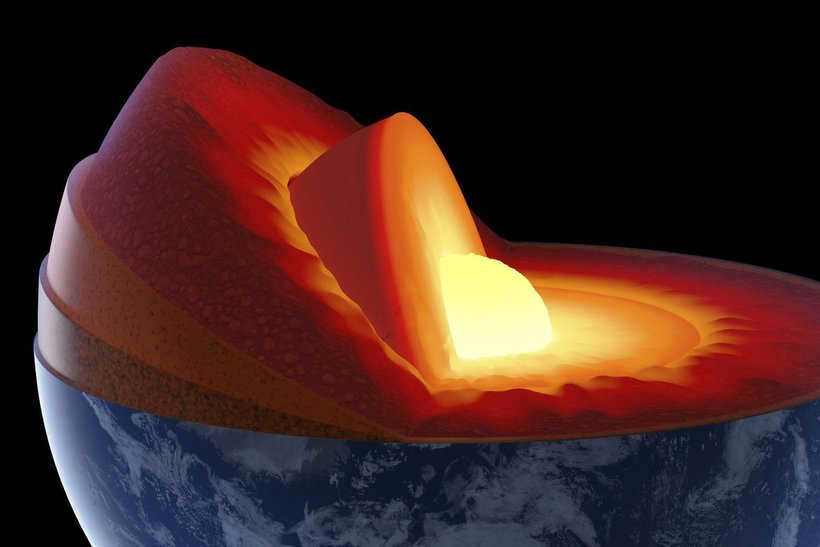
What is the composition of the outer core of a planet?
It is important to note that a planet’s core is not a singular entity, but rather consists of two distinct parts. Directly beneath the mantle lies the outer core. Comprised mainly of iron and nickel, this region exists in a completely liquid state. While the temperature within the outer core ranges from 4,000 to 6,000 degrees Celsius, it is the lack of pressure, rather than the high temperature, that prevents it from solidifying like the inner core, which incidentally has an even higher temperature.
The presence of the outer core is crucial for the existence of life on our planet. This unique arrangement of Earth has proven to be advantageous for us. The convective heat transfer between the molten metals within the outer core generates a magnetic field. This magnetic field shields us from the solar wind, preventing it from causing the planet’s water to evaporate into vapor.
Once upon a time, in a movie I viewed numerous years ago, there was a hint that a comparable occurrence might have taken place on Venus. I am uncertain of the veracity of this claim.
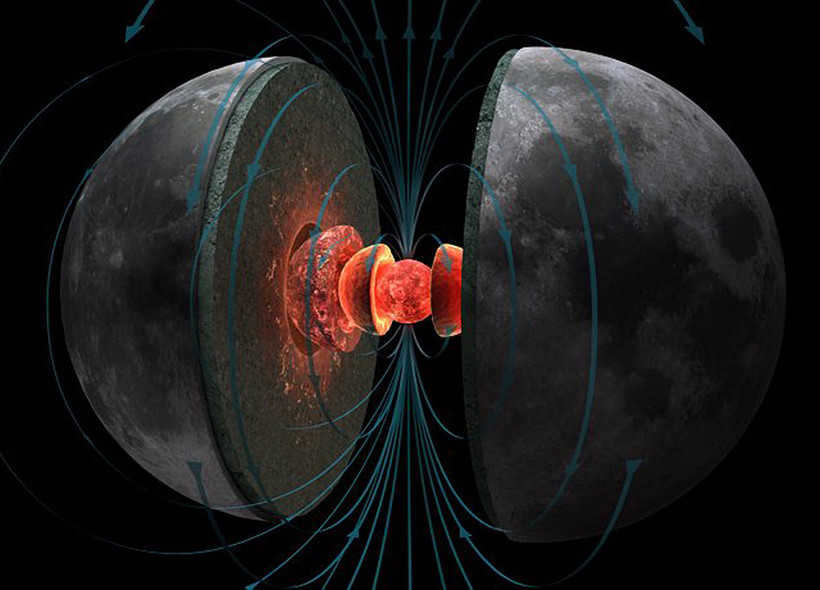
Understanding the nature of the inner core
The inner core of the Earth extends to a depth of approximately six thousand kilometers. Contrary to the spherical depiction commonly found in geography textbooks, it is characterized by numerous irregularities and rough surfaces. Notably, it has not always been in its solid state, with the process of crystallization commencing roughly three billion years ago.
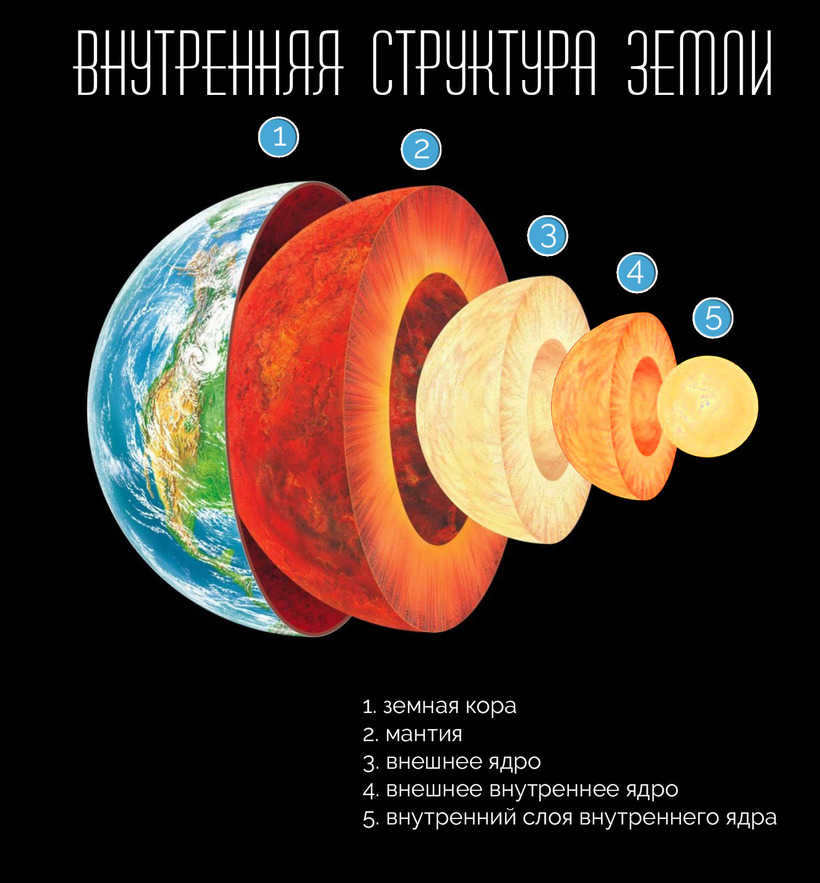
The characteristics of the Earth’s inner core:
- The depth measures approximately 6,000 kilometers;
- The maximum density is 14.3 g/cm³;
- The pressure is around 3.8 million bar;
- The gravitational acceleration of the core tends towards zero.
Interestingly, scientists have developed computer models that can predict earthquakes based on the inner core. While not completely accurate, these models can estimate the time and location of potential cataclysms.
Science has always captivated me, and I believed it had answers to every question. However, when it comes to understanding the structure of the Earth’s core, there are still many mysteries to be unraveled. Nonetheless, there is some knowledge available, and I am here to share it with you.
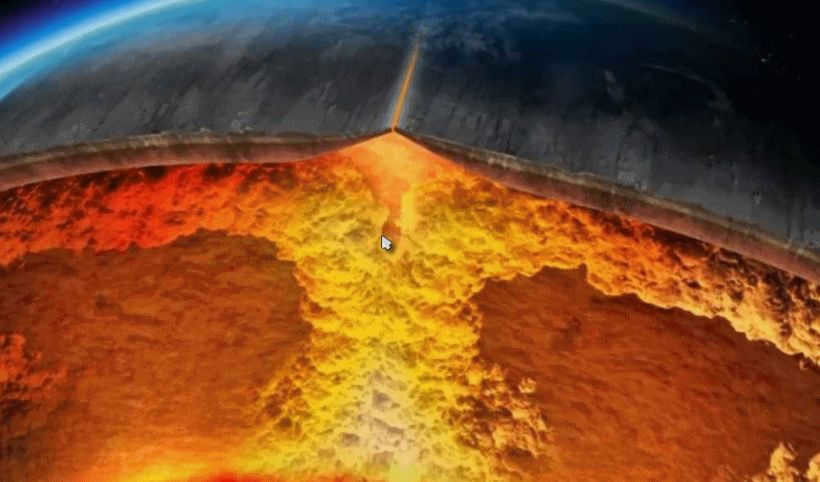
What is currently understood about the core of the Earth
Not a great deal of information is available, and the knowledge that has been obtained is mainly indirect. For instance, by studying the magnetic field, scientists have been able to observe fluctuations in its rotation speed. At present, the following statements are widely accepted:
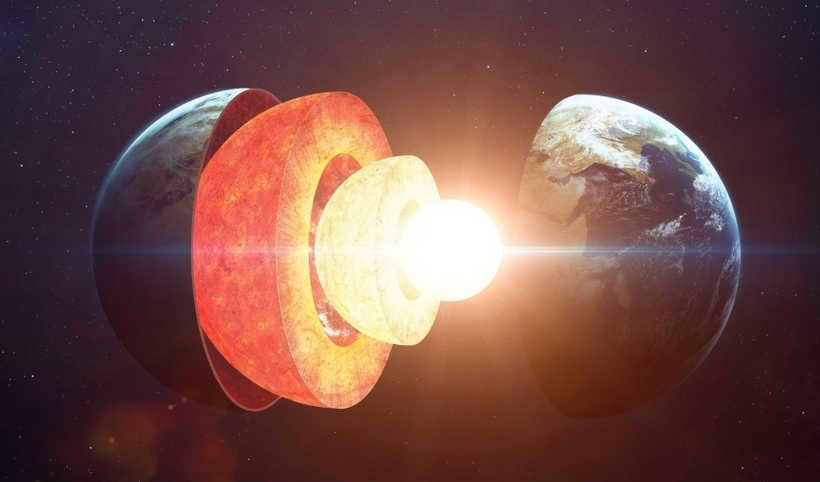
- The temperature of the Earth’s core is extremely high – at least 6000 degrees Celsius, which is nearly equivalent to the surface temperature of the Sun!
- The core experiences immense pressure – up to 400 gigapascals. This pressure serves as a source of energy, as nuclear reactions occur within the core, although they only provide about 15% of the overall energy.
- The Earth’s core measures 7,000 kilometers in diameter, making it larger than both the Moon and even Mars! Despite occupying just 15% of the planet’s volume, it accounts for 40% of its mass.
- The core has a layered structure, with distinct outer and inner layers that rotate in opposite directions, as recent discoveries have revealed. There are also indications of a solid “core” within the core.
Arrangement of the Earth’s Core
The organization of the Earth’s core is a fascinating topic. Let’s start by discussing the first layer, known as the outer core. This layer is in close proximity to the mantle and extends from a depth of 2400 km below the ocean level to 2,800 kilometers. The composition of the outer core is similar to that of the inner core, but the pressure is not as intense, allowing the molten metal to remain in a liquid state. This unique characteristic gives our planet a distinct feature – a magnetic field. The inner core, which floats within the liquid outer shell, has a diameter of 1260 km and is incredibly dense due to the immense pressure it experiences.
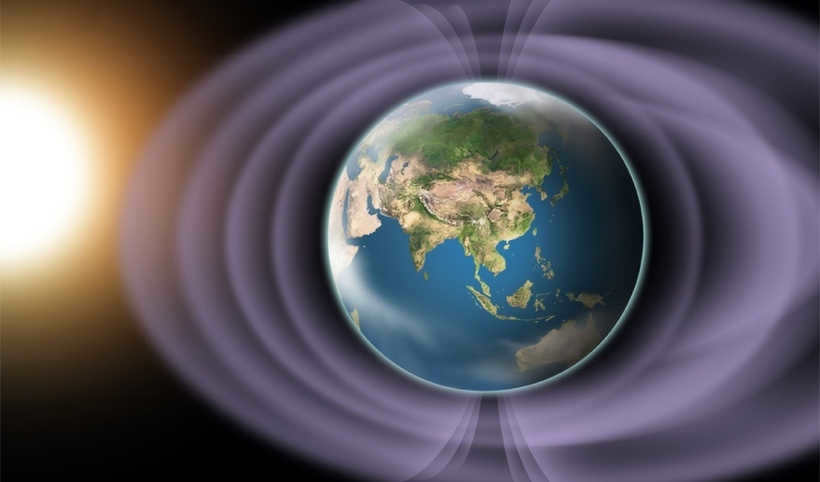
The composition of the core is composed of multi-kilometer-sized crystals of nickel and iron, which are aligned in a northward direction. In regards to the hypothetical “core”, it is identical to the inner core, with the exception that the metallic crystals are oriented towards the south.
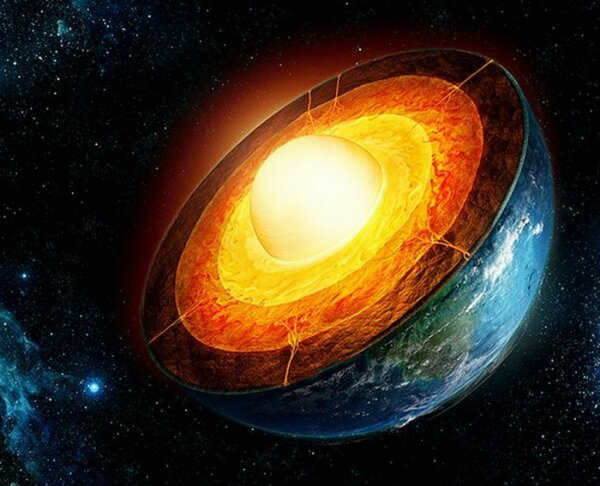

Deep within every celestial body that has achieved a spherical form, a core exists – and sometimes it is not simple, but rather composed of multiple layers. At extreme depths, even common substances like iron exhibit extraordinary properties – they grow into massive crystals, transition into a liquid state, or generate electrical currents. The Earth’s inner and outer core exemplify these anomalies, and they were also the original cradle of life on our planet.
Discovering the Depths: Journey to the Earth’s Core
Exploring the Earth’s core is no walk in the park – there are 2,900 kilometers separating the surface from its innermost depths. Delving into such depths is no easy task, as the temperature rises with each step closer to the core. In the Kola borehole, the current record-holder for depth, temperatures reached a scorching 220°C at a mere 12 kilometers down! Working under such extreme conditions poses challenges not only for electronics but also for the equipment itself, as it must be lowered into the well and retrieved once again.
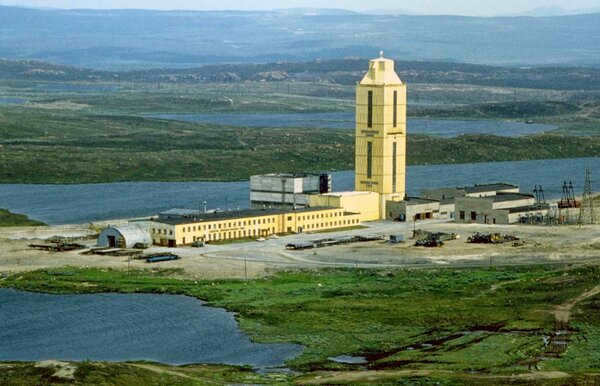
Kola ultra-deep borehole
And even after surpassing the lithosphere, there is still the challenge of penetrating the scorching plastic mantle. In the 2000s, a project was devised that aimed to enable a small melon-sized probe to reach the core. However, this plan had a couple of vulnerabilities – it required the detonation of multiple nuclear bombs, the pouring of a sea of molten metal, and the invention of a material capable of withstanding temperatures of 2-3 thousand degrees Celsius! Nevertheless, on paper, the concept appeared to be astonishing: by riding a stream of molten iron, the probe could potentially reach the Earth’s core within a week.
However, the researchers still possessed a technique that enabled them to precisely determine the density and volume of the Earth’s core – seismography. The oscillations emanating from the surface layers of the planet – vibrations from earthquakes or pulses from nuclear explosions – not only propagate across the Earth’s surface, but also penetrate deep into its interior. This is where they undergo refraction, resulting in an increase in their velocity – similar to how light waves refract when passing through glass or water. It is through the analysis of the changes in seismic waves as they traverse the planet that scientists were able to ascertain the precise physical characteristics of the core.
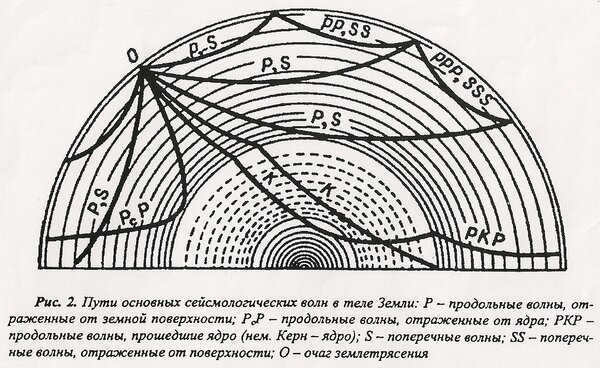

Schematic representation of seismic wave movement within the Earth’s interior
Geologists also rely on various indirect indicators. For instance, the observation of Earth’s magnetic field allows for the tracking of core rotation dynamics. Valuable clues can sometimes be found in unexpected places not specifically intended for deep-sea exploration. An example of this is the discovery made by the Hubble orbiting telescope, which detected a reversal of flow in Earth’s liquid outer core, resulting in a shift in magnetic poles.
Structure and characteristics of the nucleus
The journey to knowledge is long and full of obstacles, but its rewards are worthwhile. Currently, we have a solid understanding of the physical properties of Earth’s core:
- The temperature at the center of Earth’s core can reach up to 6000 degrees Celsius, which is equivalent to the surface temperature of the Sun. However, unlike the Sun, the core’s energy source is not nuclear reactions, but rather gravity. Specifically, it is the tremendous compression of the core that generates immense pressure, exceeding atmospheric pressure by a factor of 3.5 million and reaching 360 gigapascals. Although there are atomic decay processes occurring deep within the Earth, their contribution is relatively small. Without the significant compression, these processes would be sluggish and less productive.
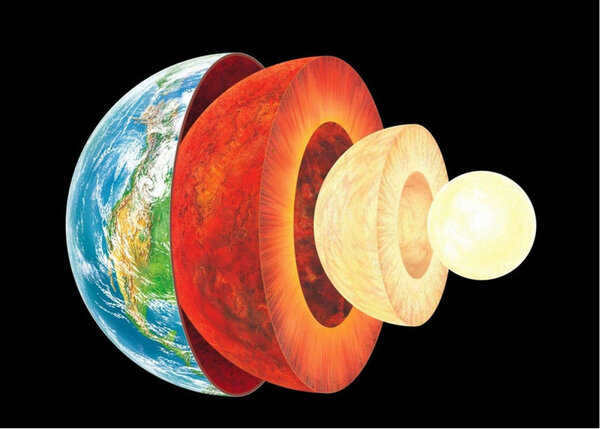
The conventional fundamental spheres of the Earth
- The Earth’s core measures 7000 kilometers in diameter – this is larger than both the Moon and Mars! It occupies a relatively small portion of the planet’s interior – about 15% of its volume – but its mass, at 1.932 × 1024 kilograms, accounts for 30% of the Earth’s total mass.
- Interestingly, the different layers of the core rotate in opposite directions. Presently, it is believed that the outer liquid core rotates on its axis from east to west, while the inner core rotates from west to east, and at a faster rate than the Earth. However, the disparity is not very significant – it only surpasses the planet by a quarter of a degree in a year.
Furthermore, recent studies indicate that there exists an additional layer within the inner core of the Earth, known as the “extremely” inner core, which undergoes rotation along a distinct axis. Let’s delve deeper into this phenomenon and explore the various constituents of the Earth’s core.
The innermost core
The initial stratum of the core that directly adjoins the mantle is referred to as the outer core. Its upper boundary lies approximately 2.3 thousand kilometers beneath sea level, while its lower boundary extends to a depth of 2900 kilometers. The composition of the outer core is indistinguishable from the underlying layers; it remains in a liquid state due to the insufficient gravitational pressure required for the molten metal to solidify. This fluidity serves as a significant advantage of the Earth when compared to the inner planets within the Solar System.
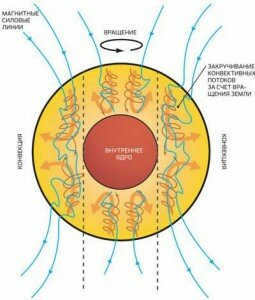

The Earth’s magnetic field is generated by the liquid part of its core. As many people are aware, the magnetosphere acts as a shield for the planet, protecting it from charged particles from outer space and the solar wind. These particles are even more hazardous than radiation, as they have the potential to disable both living organisms and electronic devices. Biologists theorize that an active magnetic field played a crucial role in the survival of primitive single-celled organisms.
What is the mechanism behind the generation of the magnetic field? The magnetic field is created through the rotational movement of liquid iron and nickel within the core. It is important to note that the magnetic properties of metals do not play a role in this process – it is purely a result of dynamic forces. Additionally, the intense heat generated in the outer core also influences the mantle, and in certain areas, this heat is so powerful that it causes molten rock to rise to the surface, resulting in volcanic eruptions.
The Core at the Center
Enclosed within the liquid layer lies the inner core. It is composed of solid matter and is approximately 1,220 kilometers in diameter, equal in size to Charon, the moon of Pluto. This solid core, along with its celestial companion, Pluto, is incredibly dense, with an average matter concentration of 12.8-13g/cm3, twice the density of iron. Additionally, it is scorching hot, with temperatures reaching a staggering 5-6 thousand degrees Celsius.
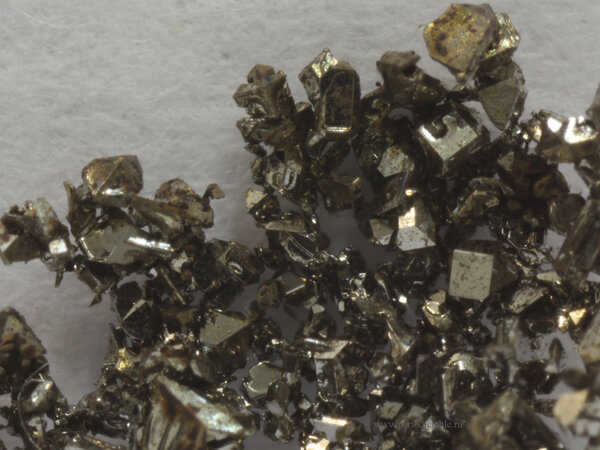
“Inside” the inner core, or a hypothetical Matryoshka doll
Even during the initial investigations of the core using seismic waves, geologists observed an unusual disruption of vibrations within the core from east to west. Initially, this went unnoticed due to the Earth’s wider circumference at the equator compared to the poles as a result of its rotation. However, subsequent research revealed the possibility of an additional layer within the central portion of the core.
What exactly is this “inside” the inner core? It is most likely composed of the same metal crystals, but oriented in a westward direction rather than northward. The cause of this stratification remains unclear. However, the crystal orientation suggests that gravitational interactions with the Sun or Moon were not exempt from influence.
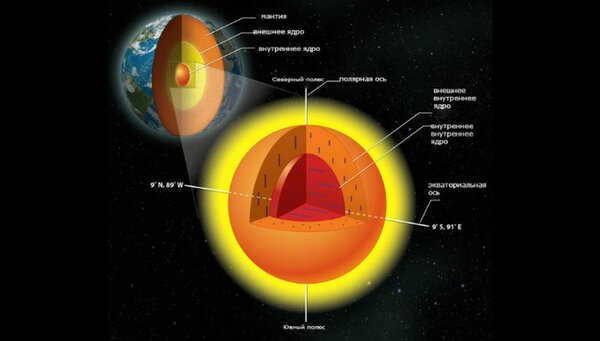

The “inner” core within the Earth’s structure
The Process of Core Formation
Every planet in the solar system, whether it be a full-sized planet or a dwarf planet like Sedna, possesses a core. The characteristics of these cores differ from one celestial body to another. For example, Mercury’s core makes up 60% of the planet’s mass and 80% of its volume, while the Moon’s core has a modest radius of 350 kilometers out of its total radius of 1735 kilometers.
However, the formation of the nucleus of any celestial body, including a star, is attributed to a fascinating gravitational phenomenon known as interior differentiation. When gas clouds start to condense around a young star, the material begins to accumulate around primary cores, such as large rocks, ice clusters, or dust particles. Once a young planet reaches a certain mass, gravity becomes influential and starts to pull heavier components like iron towards the center of the object, causing lighter substances like silicon or oxygen to rise to the surface.
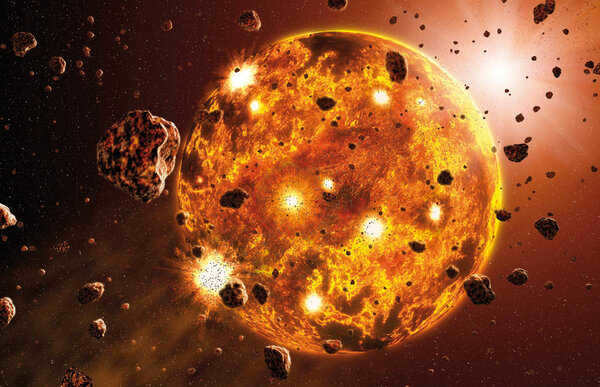

An artist’s depiction of the Earth during active accretion
During these movements, a tremendous amount of energy is released, leading to the planet’s melting and gravitational forces shaping it into a distinctive spherical form. This process accelerates the movement of dense materials. Asteroids that lack sufficient mass to undergo melting remain as accumulations of dust and rocks.
And the core of the planet was formed by the heavy elements that sank deep down, mainly iron and nickel. It spanned from the dust in the early Sun’s orbit to become a multi-layered metal sphere, which now provides warmth and protection to our planet’s interior.
Join the UFO WORLD Telegram Channel to stay updated.
Receive instant notifications about new Articles directly to your phone.
Temperature " Core " Earth " Technology " Science " GizMod.Ru
The temperature at the center of the Earth’s core exceeds by 1000 degrees
Categories: Technology " Science
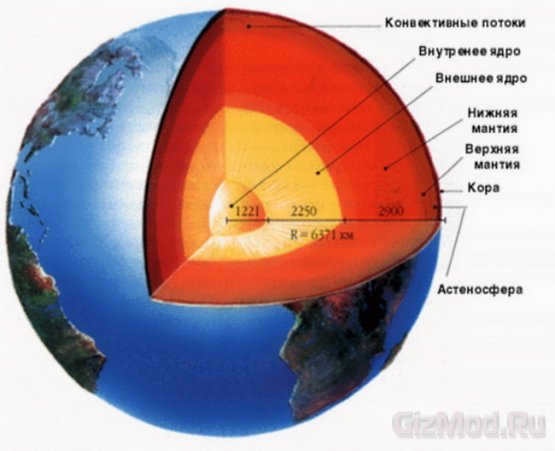
As per the findings of a scientific study released on April 26 in the journal Science, it has been discovered that the earth’s core temperature is actually 1000 degrees Celsius higher than what was previously believed. This new revelation has provided scientists with a deeper insight into the process by which our planet generates its magnetic field.
Categories and Tags: Tech ” Science ” Temperature, Core, Earth.
The research team carried out an experiment in controlled laboratory conditions to determine the boiling point of iron. By comparing the obtained results with the temperature indicators of the Earth’s outer and inner core, they concluded that the core’s temperature is approximately 6000 degrees Celsius. This temperature is nearly as high as the temperature of the Sun.
A new experiment has utilized a novel X-ray technique that enables significantly faster calculations compared to previous methods. Under typical laboratory circumstances, it was previously only feasible to observe the compression process of iron, which would determine if its structure remains solid or if it begins to melt, within a few seconds. The scientists’ innovative approach relies on diffraction, which occurs when X-rays or other forms of light encounter an obstacle and bend around it.

